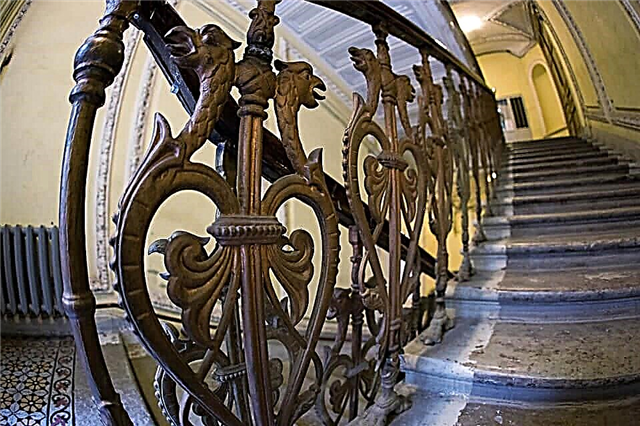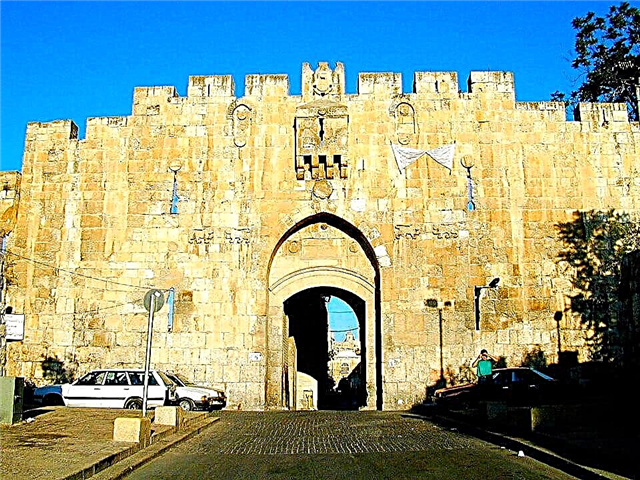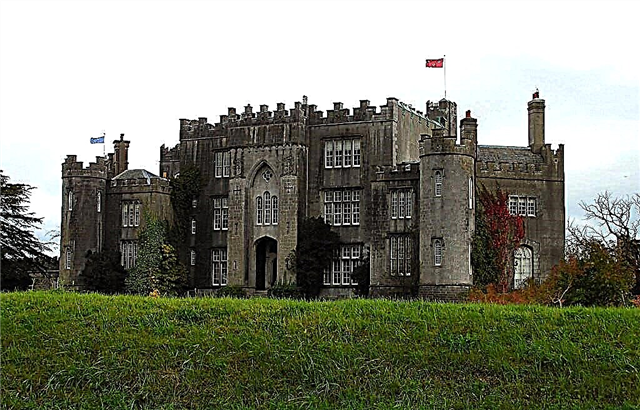The spiritual center of the northern capital of Russia is the Holy Trinity Alexander Nevsky Lavra. The men's monastery was equipped by order of Peter I and has been performing its functions for more than 300 years. The architectural ensemble of the monastery is one of the most popular sights of the city. The Alexander Nevsky Lavra in St. Petersburg attracts pilgrims and tourists from different parts of Russia and foreign countries. Visitors have the opportunity to explore the monastery, necropolis, monuments, and a museum operating in the Lavra.
History

Simultaneously with the creation of a new Russian capital, Tsar Peter I ordered to equip a monastery in the city. A site on the banks of the Chernaya River was allocated as a construction site. According to the chronicle documents, it was in this area that the decisive battle of the squad of Alexander Nevsky with the enemy troops took place. Peter I wanted to perpetuate the memory of his outstanding predecessor and therefore ordered to transfer his relics to a new monastery. The monastery acquired a patron saint and was awarded the name "Alexander Nevskaya". The general plan for the development of the territory was developed by architects D. Terzini and I. Starov. The foundation was laid in 1710. One of the first buildings was the Annunciation Church (1712). A complex was formed around it, including buildings of various functions.
Residential buildings, with cells for monks, are interconnected and form the letter "P" in shape. The inner space of the monastery is divided into zones with flower beds and gardens. Later, cemeteries appeared on the territory, where monks and laymen were buried. Members of the imperial dynasty (Empress Anna Leopoldovna, Princess Natalya Alekseevna), prominent statesmen (A. Razumovsky), outstanding generals (A. Suvorov), famous scientists (M. Lomonosov), famous writers (F. Dostoevsky, D. Fonvizin, I. Krylov), composers (P. Tchaikovsky, M. Mussorgsky, N. Rimsky - Korsakov) and artists (I. Shishkin, A. Kuindzhi).
In the 20s of the 18th century. the monastery becomes the center of education. A printing house and a seminary began to work in it, which over time was transformed into the Theological Academy. By the decree of Paul I, the monastery received the status of a lavra (1797). After the establishment of Soviet power, the struggle against religious institutions began. In the winter of 1932, the monastery was abolished, and the monks were arrested. The buildings were given for the needs of government agencies. The revival of the Lavra began at the end of the 20th century. The buildings were transferred to the ownership of the diocese, the monastery charter was approved, handicraft workshops were opened, reconstruction was carried out in the churches and divine services were resumed.
Saints and Shrines
Pilgrims come to the Lavra to bow to the ashes of Grand Duke Alexander Nevsky, pray before the miraculous icons (Seraphim of Sarov, "Nevskaya Hurry to Hearts", "It is worthy to eat") and the relics of the saints of the Kiev Caves elders, as well as to inspect other shrines.
Holy Laurels

The names of the saints revered in Orthodoxy are associated with the history of the monastery. They were inhabitants of the laurel and spent part of their lives within its walls. St Innocent, the miracle worker John Kulchitsky, and the martyr Benjamin of Kazan are widely known among pilgrims. In 2000, the Monk Seraphim Vyritsky was canonized. During World War II, he became famous for his prayer on stone. Today, his cell has been converted into a chapel, which is open to the public.
The relics of St. Alexander Nevsky

The main shrine of the Lavra is the relics of St. Prince Alexander Nevsky, the patron saint of the monastery. Initially, the cancer with the remains was in the city of Vladimir and was solemnly transferred to the northern capital by order of Tsar Peter I. In August 1724, the relic was placed in the Annunciation Church in St. Petersburg. By order of Empress Elizabeth Petrovna, a new ark was made to store the prince's remains. It was cast from silver at the Sestroretsk Arms Factory.
In the 20s. of the last century, during the period of the struggle against religion, the relics of the saint were removed from storage and put on display in the museum of atheism. The precious cancer was donated to the State Hermitage Museum. Patriarch Alexy II returned the shrine to its proper place. In 1989, the transfer of the remains of the Blessed Prince Nevsky to the Trinity Cathedral on the territory of the Lavra took place. Every year, on a memorable date (June 3), a festive prayer service is held at the monastery in front of the relics of the saint.
Icon of the Mother of God "Nevskaya Skoroposlushnitsa"
The icon with the face of the Mother of God "Hearing Hearts" is especially respected among parishioners and pilgrims. It is a copy of the original shrine kept at the Dohiar Monastery on Mount Athos. In its original form, the Mother of God was captured alone, and when creating a list, she was portrayed with the baby Jesus in her arms. The new "Quick-to-hear" was brought to Russia by the hieromonks Barsonathius and Athanasius at the end of the 19th century. The image was placed in the Alexander Chapel. After the face in an incomprehensible way did not suffer from the fire during the fire, they began to endow it with miraculous powers. The icon was able to survive during the years of fierce struggle with the cult.
During the siege of Leningrad, the image of the "Quick to Hearken" was exhibited in the Vladimir Church, along with the icon of the Kazan Mother of God. Believers turned to the faces of the Mother of God with requests for help and heavenly intercession. It is believed that the prayers said before the "Quick to Hearken" find a quick response. That is why the icon received such a name. For greater clarity, the Russian copy was called "Nevskaya Skoroposlushnitsa". Since the end of the 50s. of the last century, the place of its permanent deployment is the Holy Trinity Cathedral of the Lavra.
Building complex

The architectural ensemble of the monastery was created in the 17-18 centuries. It is characterized by features of the baroque and classical styles. The design and construction was carried out with the participation of famous architects - D. Terzini, I. Starov, T. Schwertfeger, M.D. Rastorguev. Residential and office buildings form a square around the courtyard. Each building has its own name, indicating its purpose - Metropolitan, Dukhovskoy, Seminar, Sacristy, Library. Towers are located in the corners. There are 15 churches on the territory of the monastery. On the bank of the Monastyrka River (formerly Black River), a 2-storey Annunciation Church was erected (1724). It has a rectangular shape.
The top is crowned with an 8-sided dome. It is one of the oldest stone churches in the city. The interior is decorated with moldings (Rossi brothers), wall paintings (I. Nikitin, I. Vishnyakov), icons (G. Gzel). The crypt contains the tombs of many prominent people. Above the entrance to the monastery there is a Gateway Church of Sorrow (Joy of the Mother of God of All Who Sorrow). It was intended for artisans and traders serving the needs of the laurel. The mansard position determined the modest size of the temple.
Holy Trinity Cathedral

The core of the monastery complex is the Holy Trinity Cathedral. The building was built at the end of the 18th century. It has features of the classical architectural style. The central facade looks like a portico with 6 columns. The upper part is made in the shape of a triangle. The exterior decoration of the building is made up of sculptures illustrating passages from the Old and New Testaments. They were made according to the sketches of the famous Russian architect F. Shubin.
The interior of the cathedral has a 3-nave division. The walls around the iconostasis are covered with marble. The altar partition is made of bronze casting with a graceful pattern. The vaults and the dome are painted according to the sketches of D. Quarenghi.The temple is adjoined by 2 bell towers with a height of 47 m. Bells are installed on them, incl. "Evangelist" (weight - 18 tons).
Cossack cemetery

On the territory of the Lavra in the 18th - 20th centuries. several burial places were arranged. Monks, priests, and townspeople were buried in the cemeteries inside the monastery. The most famous monastery necropolis is the Inner Alexander Nevsky Cemetery. It is also called Cossack. In memory of the Cossacks who died during the dispersal of the Bolshevik demonstration in July 1917. The official date of the opening of the necropolis is recorded in historical documents - December 1919.
During the years of Soviet power, the place was named the Communist site. The place was set aside for the burial of participants in the civil war, party functionaries, employees of the internal affairs bodies and the Cheka. Since the 1930s, the graves of famous scientists (N. Marr, B. Legrand, M. Basov, I. Grekov, S. Fedorov, etc.) began to appear on the Site. The number of burials increased during the blockade. Many prominent military leaders, heroes of the Great Patriotic War found their last refuge on the territory of the cemetery. Since the 70s. in the necropolis, only the burial of urns with ashes after cremation is allowed.
Small architectural forms (gravestones, steles, sarcophagi, obelisks, etc.), which are widely represented in the cemetery, are of artistic and aesthetic significance. In addition to the secular, the graves of the ministers of the Orthodox faith are located in the necropolis. They are usually marked with crosses. In 2005, a monument called "The Triumph of Orthodoxy" was erected on the territory of the Cossack Cemetery. It glorifies the memory of people who died during the years of repression and anti-religious struggle. The monument was made according to the project of E. Solovieva. The general plan includes almost 450 graves. According to historians, over 700 people were buried at the Cossack cemetery during the period of its existence.
Monuments on the territory

While walking through the territory of the Alexander Nevsky Lavra, visitors have the opportunity to see a number of monuments. They were installed in the early 2000s. The figure of Alexander Nevsky rises at the entrance to the monastery. The patron saint of the monastery is depicted riding a horse. The sculpture reminds of the military and spiritual feat of the famous prince. The project was created by the sculptor V. Kazanyuk. The square in front of the Trinity Cathedral is decorated with a monument dedicated to the Nativity of Christ. The height of the stele is 7 meters. Another symbolic sculpture reminds of the sacrifice of Jesus in the name of all mankind. It depicts a circle with a cross inside. The allegorical image was installed in the monastery garden in 2005.
In honor of the reunification of the Russian Orthodox Church Abroad with the Moscow Patriarchate, a special veneration cross was laid. It was erected in 2013 in the Metropolitan Garden of the Lavra. For the 300th anniversary of the monastery, which was celebrated in 2013, a panel was created depicting St. Alexander Nevsky. The bas-relief is cast from bronze and fixed on the wall of the Prosphora building. The Lavra's metropolitan building is marked with a memorial plaque, which indicates the place of death of the holy martyr Pyotr Skipetrov. He fell at the hands of the Bolsheviks in January 1919.
Workshops

The Alexander Nevsky Lavra is famous for its craft workshops. They create not just objects for worship, but genuine works of art. The specialists working in the restoration workshop take care of the preservation of ancient iconography. It was organized at the end of the 20th century by order of Bishop Nazarius. Professor A. Krylov and icon painter D. Mironenko take an active part in the workshop. Under their leadership, a new image of the praying Alexander Nevsky was created, depicted against the background of the Trinity Lavra.
Craftsmen working in an art and jewelry workshop produce items for worship. In their work, they use a variety of techniques - casting, enameling, carving, engraving. Jewelry is made of precious metals, precious and semi-precious stones, rare woods, ivory. Since 2006, a sewing workshop has been located in the Fedorov building of the monastery. Its employees develop the design of materials for church vestments and decoration of temple premises. Museum exhibits and old illustrations are often sources of inspiration.
Since 1974 a creative group of ceramists "Alpha" has been operating in Leningrad. She is engaged in the creation of samples of new porcelain products, incl. with a religious theme. The group took part in the production of the Nevsky damask with a bas-relief of the saint, Easter souvenir eggs, and a series of Kizhi porcelain tableware. In 2007, "Alpha" was transformed into a separate art workshop, which is based on the territory of the monastery. The monastery also has its own pottery production. The pottery has established the production of dishes, household items, toys. The products are sold through the store. In addition, master classes are organized for visitors to the Lavra on weekends. Their participants are trained in the skills of pottery.
In the late 90s. 20th century a kiot workshop was organized at the monastery. She specializes in the creation and restoration of icon frames. The craftsmen also consult on the correct arrangement of the iconostasis at home. A special place among the monastery workshops is occupied by the printing and graphic arts. Its main products are lithographs, linocuts, etchings. In the process of work, old technologies of hand printing are used. Illustrations are of high artistic value. They are published in small editions and are collectibles.
Schedule of services
Access for parishioners and tourists is open to the Lavra every day from 5.30 am to 11 pm. Divine services in the Holy Trinity Cathedral are held according to the established schedule:
- prayer service at 6 am (Monday-Saturday)
- midnight office at 6.20. mornings (monday-saturday)
- early liturgy at 7 a.m. (Sunday)
- Late liturgy at 10 am (Saturday - Sunday and on church holidays)
- evening at 17 pm (Monday-Sunday)
In the Church of Theodore of Novgorod, the Late Liturgy is celebrated at 10 o'clock (Monday-Friday) and the evening service at 17 o'clock (Sunday-Thursday). The liturgy (liturgy) in the Gate Church takes place at 7:00. mornings from Monday to Saturday.
Where is it located and how to get there
The Lavra is located on the Monastyrsky Island. Its official location is Monastyrka Embankment, building 1. The easiest way to get to the monastery is by metro along the Nevsko-Vasileostrovskaya line. Exit to the station. "Alexander Nevsky Square".











